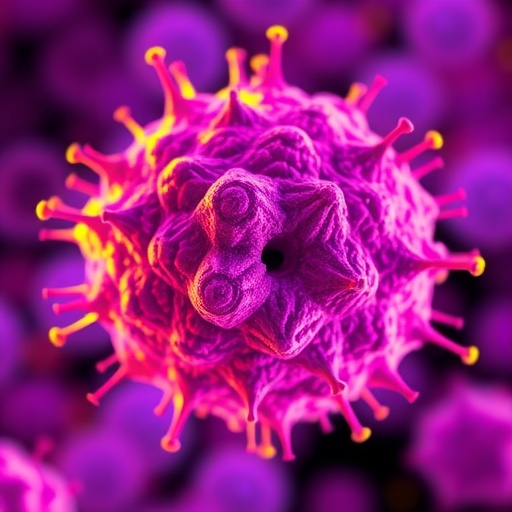In a groundbreaking genetic study, researchers have unveiled new insights into the mutational landscape of high-grade serous ovarian carcinoma (HGSOC) among Tunisian patients. This investigation marks the first comprehensive profiling of both germline and somatic mutations within this population, offering promising avenues for precision medicine and targeted therapeutic interventions. Utilizing next-generation sequencing (NGS) technology, scientists analyzed tumor and blood samples to identify critical pathogenic variants that may drive ovarian tumorigenesis.
Ovarian cancer remains one of the deadliest gynecological cancers worldwide, primarily due to its frequent late-stage diagnosis and subtle early symptoms. Among the various histological types, HGSOC is notoriously aggressive and often resistant to conventional therapies. Understanding the genetic underpinnings of this malignancy is crucial as it can inform personalized treatment strategies and improve survival outcomes. The current study embarks on dissecting the prevalence and nature of mutational changes in a North African population that has been historically underrepresented in genomic cancer research.
Targeted next-generation sequencing was employed to examine 31 cancer-associated genes in 54 Tunisian patients diagnosed with HGSOC. Both germline DNA, obtained from blood samples, and somatic DNA from formalin-fixed paraffin-embedded (FFPE) tumor tissues were analyzed. This dual approach enabled the team to distinguish inherited mutations from those acquired during tumor development, providing a nuanced understanding of the tumor biology specific to this ethnicity and environment.
The findings revealed that 20.3% of the patients harbored pathogenic germline variants (PVs), whereas somatic PVs were present in 27.77% of the cohort. Strikingly, five individuals exhibited pathogenic variants in the BRCA1 gene at both the germline and somatic level, indicating a complex interplay that could influence tumor progression and therapeutic responses. The BRCA genes, especially BRCA1 and BRCA2, are well-known tumor suppressors involved in DNA repair mechanisms, and their disruption is linked with hereditary breast and ovarian cancers.
Beyond BRCA genes, somatic mutations were identified in crucial homologous recombination (HR) repair pathway genes, including ATM, RAD50, and BRIP1. These genes play pivotal roles in maintaining genomic integrity by orchestrating the repair of double-strand DNA breaks. Their alteration suggests that defects in DNA repair pathways are central to the pathogenesis of Tunisian HGSOC, potentially rendering patients amenable to treatments exploiting these vulnerabilities, such as PARP inhibitors.
One of the study’s notable discoveries was the identification of four recurrent BRCA1 pathogenic variants, among which a novel mutation was documented. This finding not only enriches the global catalog of BRCA mutations but also hints at a possible founder effect or unique mutational spectrum in the Tunisian population. Such insights are crucial for developing population-specific genetic screening panels that can facilitate early detection and preventive strategies.
Age also emerged as a significant factor, with germline BRCA1/2 pathogenic variants predominantly found in patients younger than 50 years old. This demographic correlation underscores the importance of genetic counseling and testing, particularly in younger ovarian cancer patients, to enable timely interventions and inform at-risk family members. Moreover, carriers of these germline mutations demonstrated better overall survival, suggesting that the presence of BRCA mutations may confer therapeutic sensitivity, likely due to the tumor’s defective DNA repair mechanisms.
In addition to pathogenic mutations, the research uncovered 19 variants of uncertain significance (VUS), highlighting the complexities of interpreting NGS data. The classification and clinical relevance of these VUS remain ambiguous, underscoring the need for further functional studies and integrative bioinformatics approaches to elucidate their potential role in cancer biology.
This pioneering study provides a valuable reference point for oncologists and geneticists working with North African populations. It emphasizes that genetic diversity and population-specific mutational profiles can profoundly impact disease behavior and response to therapy. Consequently, the study advocates for the integration of comprehensive genetic testing into routine clinical management of ovarian cancer, particularly in genetically distinct populations.
Importantly, the discovery of key mutations in genes involved in the homologous recombination repair pathway paves the way for precision oncology. Patients harboring such alterations might benefit from emerging targeted therapies, including PARP inhibitors, which exploit tumor-specific weaknesses in DNA repair. Personalized treatment regimens based on genetic profiling can potentially improve prognosis and quality of life for affected women.
The research also carries significant implications for genetic counseling. Identification of germline mutations mandates family risk assessment and could lead to preventive interventions such as prophylactic surgeries or enhanced surveillance. This is especially relevant in populations where inherited cancer susceptibility genes may exhibit unique mutational patterns.
Importantly, the study calls attention to the role of ethnic and geographic factors in shaping the mutational landscape of ovarian cancer. Tunisia’s distinct genetic background underscores the need for expanding genomic studies beyond commonly studied Western populations to achieve more equitable and effective cancer care worldwide.
Taken together, the study provides robust evidence that somatic and germline mutations in key cancer-associated genes are common among Tunisian women with HGSOC. This genomic insight advances our understanding of tumor biology and offers new directions for personalized therapy and genetic counseling tailored to this specific demographic.
The study’s comprehensive mutation profiling exemplifies how next-generation sequencing can unravel the complex genetic architecture of aggressive cancers, fostering the development of targeted treatment options and enhanced patient stratification. As precision medicine continues to evolve, such population-specific investigations will be instrumental in closing existing disparities in cancer outcomes globally.
Future research building upon these findings is necessary to delineate the functional impacts of identified variants and to translate genetic discoveries into clinical practice. Collaborative efforts between clinicians, geneticists, and researchers will be critical to harness the full potential of genomic medicine in managing ovarian cancer and improving patient survival rates.
Subject of Research: Genetic profiling of germline and somatic mutational variants in Tunisian high-grade serous ovarian carcinoma patients.
Article Title: Germline and somatic mutational variants of Tunisian high grade serous ovarian cancer identified by next-generation sequencing.
Article References:
Ammous-Boukhris, N., Abdelmaksoud-Dammak, R., Ben Kridis, W. et al. Germline and somatic mutational variants of Tunisian high grade serous ovarian cancer identified by next-generation sequencing. BMC Cancer 25, 1542 (2025). https://doi.org/10.1186/s12885-025-14989-x
Image Credits: Scienmag.com
DOI: https://doi.org/10.1186/s12885-025-14989-x
Tags: cancer genomics in North Africagenetic profiling of HGSOChigh-grade serous ovarian carcinoma mutationslate-stage ovarian cancer diagnosisnext-generation sequencing in cancerpersonalized treatment strategies for HGSOCprecision medicine for ovarian cancersomatic and germline mutations in cancertargeted therapies for ovarian cancertumorigenesis in ovarian cancerTunisian ovarian cancer researchunderrepresented populations in cancer studies





